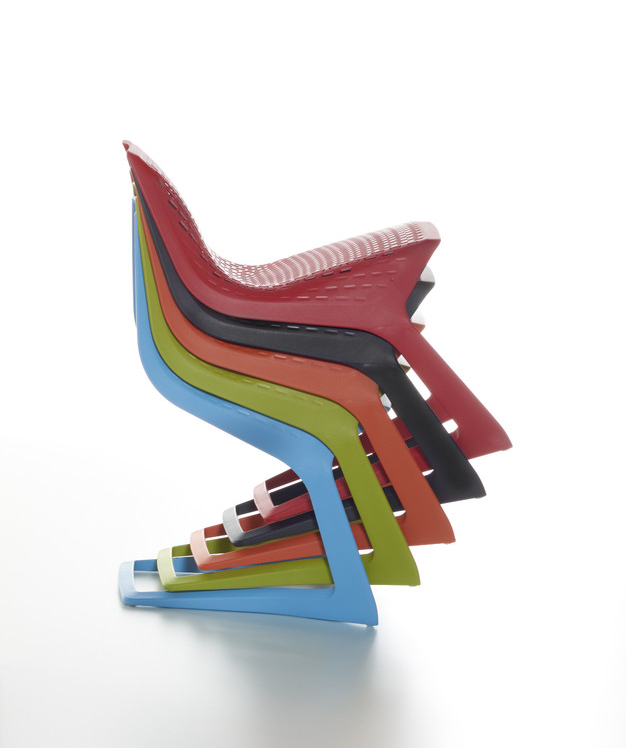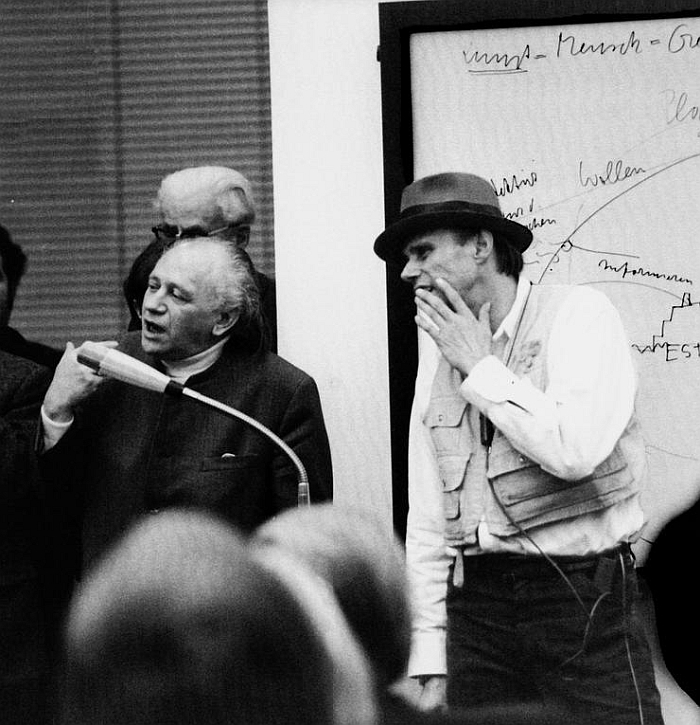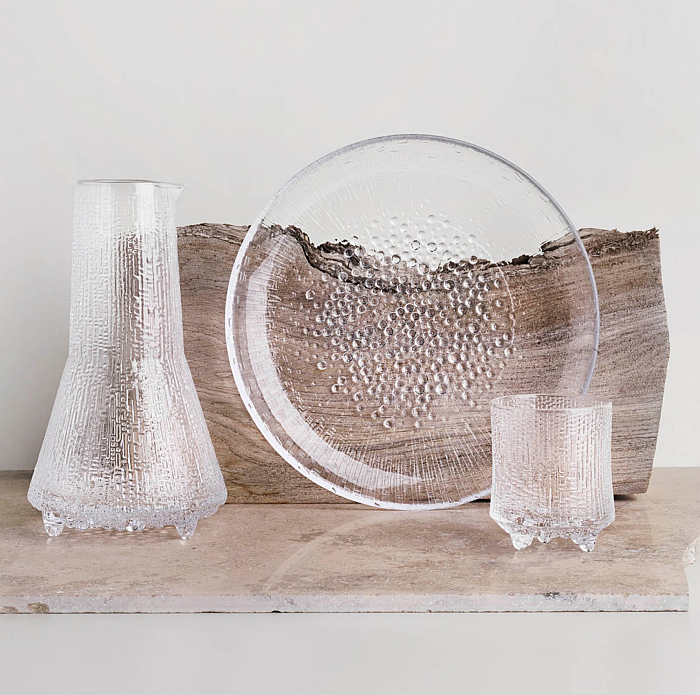5 New Design Exhibitions | Architecture | Designer | Everyday Design | Exhibitions and Shows | Weil am Rhein
Following the declaration of the French Republic in 1792 a new calendar was introduced in the realms of France: the Revolution had washed away France past and the Republic marked the start of a new reality for mankind, one of universal Liberté, Égalité, Fraternité, and therefore demanded a resetting of the collective clock, a new measuring of time, and thus out went the Gregorian calendar and its historic associations with church and state, and in came le calendrier républicain, the French Republican Calendar.
And while, yes, one can consider the belief amongst the new republicans in the eternal gloriousness of the coming future as somewhat naive, one must remember that we can reflect on their optimism with the benefit of over 200 years hindsight and experience.
The argument for a new calendar appears however as compelling and self-evident as it must have done at its adoption on October 24th 1793. Or 3 Brumaire II, as we believe le calendrier républicain would date the day of its adoption.
Aside from its ten day week, an early attempt at bringing decimalisation to our time keeping, and the bequeathing of every day its own unique name, the principle difference between the Gregorian and Republican calendars is the move from the 12 months of varying lengths inherited from the Romans to twelve months each comprising thirty days, three ten day weeks, and the renaming of the months to give them a connection to nature rather than to Romans: the period between 19/20th February and 19/20th March, that period in which we find ourselves at the time of writing, being known as Ventôse, from venteux, windy, and was preceded by Pluviôse, rainy, and followed by Germinal, germination
Which all strikes us as particularly apposite as we move towards the next phase of our post-pandemic society; as a fresh wind blows the global rain clouds away and ushers in a period of re-birth and springing forth. Yes, such optimism may be as naive as that of the French revolutionaries, but we have a much better understanding of history today, and for all a much better understanding of the sense and logic in, utter necessity of, making use of the myriad lessons of history in order to avoid the pitfalls and follies of the past, and to allow us to chart an untroubled course forward......oh.....hang on......
Although, now is as good a time as any to start. The theory is known, we just need to move into the practice. And so given that all nations and all peoples have had their Corona tribulations should we not think about re-setting our global clocks, starting afresh at a new global year zero for a new global society?
We'll leave others more qualified than us to work out the practicalities and technicalities, and decide on the basis of the nomenclature, and instead recommend here four new exhibitions scheduled to open in Germinal CCXX, and thus, one hopes, once the winds of Ventôse have begun to do their job, and also recommend a radio station that's been online since the rains of Pluviôse....

As any fule kno, for all that the development of design in late 19th/early 20th century Europe was a geographically diverse affair, an important motor, a major centre, was without question Germany, and that in no small measure thanks to institutions such as, among many, many others, the Deutsche Werkstätten Hellerau, the Deutsche Werkbund, or, and arguably most prominently of all, Bauhaus. And then came the Second World War and in its wake East Germany and West Germany.
A division that clearly didn't, couldn't, change that joint history; but did by necessity of political and economic reality lead to alternative continuations of that joint heritage.
Alternative continuations with all their invariable similarities and differences that the Vitra Design Museum aim to explore and elucidate in German Design 1949–1989. And aim to do so with a presentation which promises to take the visitor on a chronological journey, and thus a journey not only through the evolving, political, social, cultural, economic realities of the two Germanys, ¿two Germanies?, but also through the evolving relationship between the two; and a journey populated by and discussed via objects by designers in Germany East and West as varied as, and amongst many others, Peter Ghyczy, Josef Böhm, Dieter Rams or Rudolf Horn, and also via deliberations on associated genres such as architecture, urban planning, transportation, clothing, graphics, et al.
And which in doing so should allow not only for some differentiated insights into the development, and contexts, of design in West Germany and East Germany, but also allow for some reflections on the development of design in Germany since 1989, on the question how/have the two became/become one....
German Design 1949–1989. Two Countries, One History is scheduled to open at the Vitra Design Museum, Charles-Eames-Str. 2, 79576 Weil am Rhein on 29 Ventôse a.k.a Frêne a.k.a Saturday March 20th and run until Sunday September 5th. Please check the Vitra Design Museum website for current information.

One of the more predictable questions posed ahead of any major furniture trade fair is if we need ever new chairs?
A question that, invariably, is posed with an incomplete understanding of the term "chair". A state of affairs Chaise. Stoel. Chair. should help alleviate.
Promising a presentation of some 100 chair designs from the late 19th century until today, Chaise. Stoel. Chair. aims to take the visitor on a tour not just through the (hi)story of chair design but for all through the hows, whys and wherefores of the chair, of the essence and fundamentals of chair design, of the chair as not just an object on which one sits, for that one doesn't need a chair, in many regards a chair is pure decadence for simply sitting on, but rather the chair as an object of daily use that exists in context of technological, material, social, ecological et al developments and evolutions, and thus as an object arising from a particular culture, time and place. A component of contemporary society. A reflection of contemporary society. And understanding of contemporary society.
And which in doing so should help explain that what we don't need are ever new chairs, but ever new interpretations of the chair. And that the question to ask at any furniture trade fair is how many of the alleged new chairs on show actually are? And if they're not, if we need them?
Chaise. Stoel. Chair. Defining Design is scheduled to open at the Design Museum Brussels, Place de Belgique/Belgiëplein, 1020 Brussels on 3 Germinal a.k.a Asperge a.k.a Wednesday March 24th and run until Sunday August 29th. Please check the Design Museum Brussels website for current information.

2021 marks the 100th anniversary of the birth of the artist Joseph Beuys and throughout the course of the year his life, work and for all legacy will be celebrated and reflected on in numerous exhibitions.
Including one in his home town of Krefeld in whose Kaiser Wilhelm Museum Beuys held a lecture in December 1971 under the title Kunst = Mensch, Art = Human, an equation which at its full length states that Art = Human = Creativity = Freedom, and thus a bit of simple arithmetic which helps one better approach Beuys' understanding of art as Freiheitswissenschaft, the science of freedom, his position that we are all artists, and of a Soziale Plastik, a Social Sculpture, which we all help shape and form. And thus that while Beuys' art was art, it also has very clear parallels to social design, can in certain regards be considered a precursor in the development of social design; social design being as it is every bit as much an extension of the term "design" as Beuys' demanded that understandings of "art" needed to be extended. We are all not only all artists, but we are also all designers of life's great social sculpture.
Primarily based around the room installation Joseph Beuys realised in the Kaiser Wilhelm Museum featuring seven of his works, a permanent exhibition which will be expanded by further items from the museum's collection, including Beuys' 1971 lecture, Kunst = Mensch should allow not only for a gentle introduction to Joseph Beuys and his understandings of art and the relationships between art and.... well, everything, but should also help us all approach an understanding that we are all responsible for the realities of the environments in which we live.
Kunst = Mensch. Joseph Beuys in Krefeld is scheduled to open at the Kaiser Wilhelm Museum Joseph-Beuys-Platz 1, 47798 Krefeld on 7 Germinal a.k.a Bouleau a.k.a Sunday March 28th and run until Sunday August 1st. Please check the Kaiser Wilhelm Museum website for current information.

In 1881 a small glassworks was established in the rural Finnish community of Iittala. In 2021 Designmuseo, Helsinki, look back on the intervening 140 years, and promise not only a presentation of the (hi)story of the Iittala glassworks and the Iittala brand as the company moved over time from glass to, for example, ceramics and silverware, but also promises reflections on both that (hi)story and of Iittala in context of the wider social, political and economic developments of Finland since 1881, and also also of the relevance to and place of Iittala in contemporary Finnish society.
Largely based on Designmuseo's own collection of Iittala objects, supported and expanded by documents and photos from the museum's archive, Kaleidoscope from Nature to Culture should, not least through the promised depth and variety of its narrative, help move understandings of Iittala away from not just the glassware on which the company was founded, but also away from the popularly known objects by Finnish creatives such as, and amongst many others, Aino Aalto, Tapio Wirkkala or Kaj Franck and also by international voices such as Ronan and Erwan Bouroullec, Alfredo Häberli or Jasper Morrison, and place it much more in the development of glassware as utilitarian and decorative objects and the relationships between the two, in the formal and functional development of tableware as societies and cultures have evolved and developed, and also in the proactive role of Iittala in the development of contemporary design understandings in Finland. And beyond.
Iittala - Kaleidoscope from Nature to Culture is scheduled to open at Designmuseo, Korkeavuorenkatu 23, 00130 Helsinki on 5 Germinal a.k.a. Poule a.k.a. Friday March 26th and run until Sunday September 19th. Please check the Designmuseo website for current information.

Back on Mousse a.k.a. 2 Pluviôse the Museum für Kunst und Gewerbe Hamburg were due to open the exhibition Life on Planet Orsimanirana, but for popularly understood reasons, didn't. And while the plan is to open the exhibition just as soon as Covid-19, and the Hamburg Senat, allow, on Buis a.k.a. 16 Pluviôse a central component of the exhibition concept was publicly launched: Radio Orsimanirana.
As an exhibition Life on Planet Orsimanirana aims to reflect on contemporary social, economic, ecological, cultural, et al realities/challenges/conflicts and explore how as a global society we can move forward, or perhaps better put, how as a global society we could, should, must?, move forward together. How well it does or doesn't achieve that, we'll all just have to wait and see.
Until then, and indeed for all who simply can't make it to Hamburg during the exhibition's run, Radio Orsimanirana reflects in its own way on many of the central themes of Life on Planet Orsimanirana, including How to imagine the new world, How to create the new world, How to claim the new world and does so through a mix of talk shows, performances, readings, spoken words, actions, DJ sets, mixtapes, etc, etc, etc
And for all aims to do so through the participation of all and any who feel they have something to contribute.
Aside from a Radio Orsimanirana studio within Life on Planet Orsimanirana, and where visitors are invited to create their own content, or will be just as soon as its open, anyone, anywhere is invited to submit a programme; hour long slots being available until the end of October. The format and content is up to you.
And as we all know contributing to debates about the future is important, and the more voices, and for all the more varied voices, who do so, and the more debate and discourse that generates, the greater the chance that we will end up somewhere we all feel comfortable in and responsible for. Radio Orsimanirana, for all through its connections with a curated exhibition and thus the fact it exists in context of a wider framework and deliberative process, is an interesting platform for, at least part of, that debate.
Whereby we must admit that a major focus of our Radio Orsimanirana listening has been the DJ sets and mixtapes: there's been a few lunchtime raves in the smow Blog office this past Pluviôse and Ventôse. Which, yes, has been most satisfying......
Please check the Museum für Kunst und Gewerbe Hamburg website for current information regarding Life on Planet Orsimanirana
⇶ Radio Orsimanirana (our tip: click the eyeball in the bottom right-hand corner and then the thoroughly, and reprehensibly, irritating animation vanishes.)
